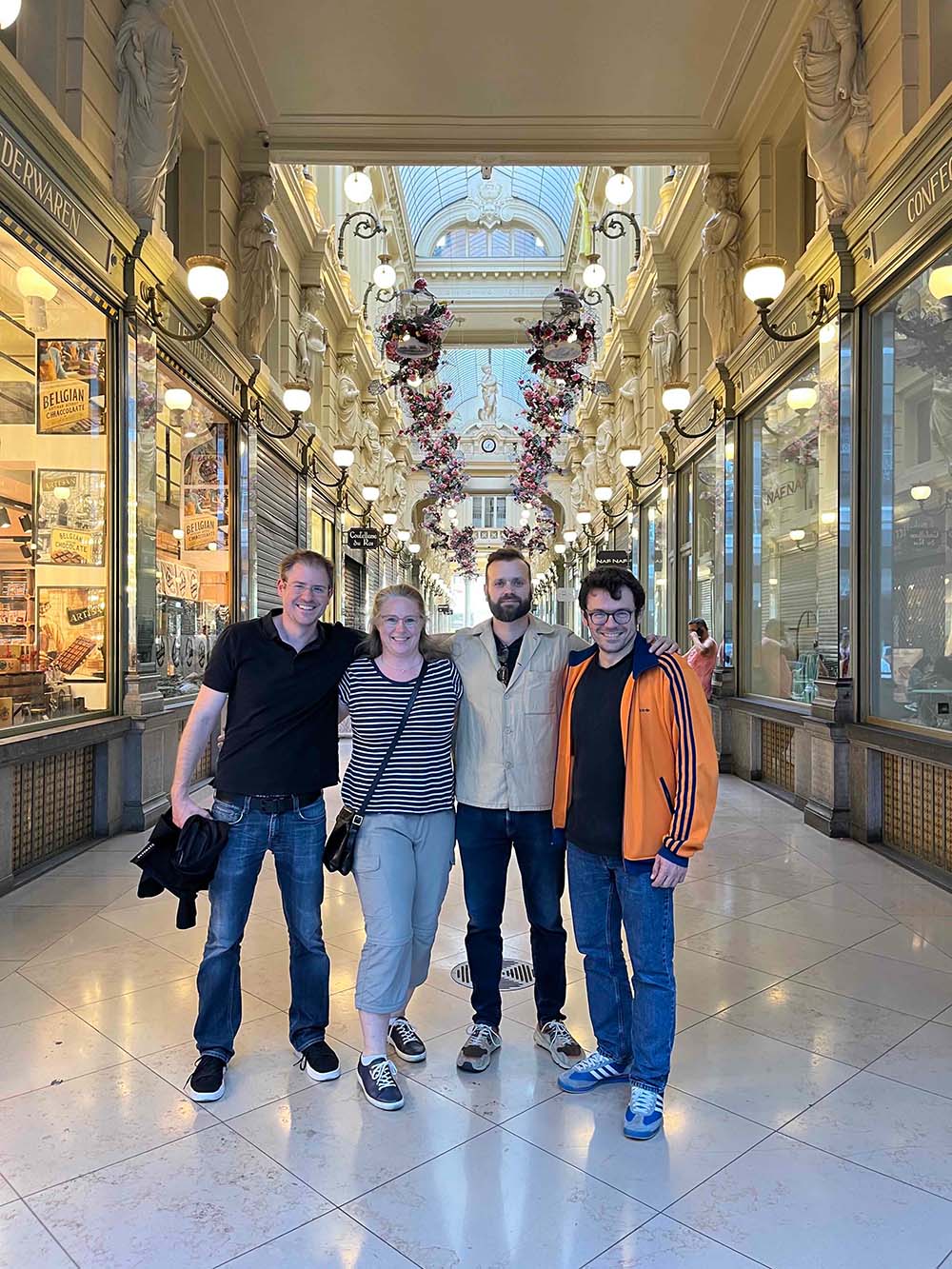Antonino Di Piazza leads on theory for a multimillion-dollar project exploring the limits of light-matter interaction.
Antonino Di Piazza, a professor of physics at the University of Rochester and a distinguished scientist at the University's Laboratory for Laser Energetics (LLE), is part of an international team that has been awarded a prestigious €14 million (approximately $16 million USD), six-year European Research Council (ERC) Synergy Grant.
The grant supports the use of multi-petawatt-class lasers and plasma accelerators to explore the non-perturbative quantum electrodynamics (NP-QED) regime, advancing our understanding of how matter behaves under the most intense electromagnetic fields ever produced on Earth.
The team also includes researchers from DESY (Deutsches Elektronen-Synchrotron) Research Centre in Germany, CEA Paris-Saclay (Commissariat à l'énergie atomique et aux énergies alternatives) in France, the Weizmann Institute of Science in Israel, and ELI-NP (Extreme Light Infrastructure-Nuclear Physics) in Romania. The project is among the most competitive research awards in Europe, with only 66 projects selected from 701 applications (a 9.4 percent success rate).
'A completely new regime of physics'
The project aims to test QED-the theory describing how light and matter interact-under unprecedentedly extreme conditions.
Using plasma accelerators and ultra-intense lasers, the team will attempt to expose ultra-relativistic electrons and positrons to electromagnetic fields exceeding the Schwinger limit, where it has been conjectured that the interaction between light and matter is much stronger than typically observed.
"We will need to develop a new theoretical approach to describe physics at these extremely high fields," Di Piazza says. "At such intensities, QED is expected to behave as a strongly interacting theory-similar to quantum chromodynamics-which would open a completely new regime of physics."
The NP-QED collaboration will combine expertise in quantum electrodynamics, plasma acceleration, and laser technology. Henri Vincenti (CEA Saclay) pioneered the relativistic plasma-mirror technique to boost laser intensity by several orders of magnitude; Andreas Maier (DESY) leads the development of compact and high-quality plasma accelerators; Jenny List (DESY) is responsible for designing new detectors suitable for measuring high-flux electron, positron, and photon signals; and Di Piazza will develop theoretical models to interpret experimental results and compare them with QED predictions.
Harnessing ultra-powerful lasers

The areas of study in this NP-QED award directly align with experiments that are central to NSF OPAL, the proposed Optical Parametric Amplifier Line user facility at LLE, sponsored by the US National Science Foundation (NSF).
Di Piazza is one of five co-principal investigators for the NSF OPAL design project, along with Jonathan Zuegel, a professor of optics and a distinguished scientist at LLE; Franklin Dollar from the University of California, Irvine; Eva Zurek from the University at Buffalo; and Ani Aprahamian from the University of Notre Dame. The proposed facility plans to deliver two 25-petawatt laser beams at extreme intensities.
"By scaling the results of our simulations, we expect to access the fully non-perturbative regime of quantum electrodynamics at NSF OPAL," says Di Piazza. "This synergy between European and US facilities will drive major advances in fundamental physics, lasers, and detector technology."
"Dr. Di Piazza's contributions to this collaboration exemplify the innovative spirit of the people at the University of Rochester's Laboratory for Laser Energetics," says Zuegel, who is also project director for NSF OPAL and division director of laser materials and technologies at LLE. "His theoretical leadership will deepen our understanding of the universe while advancing next-generation laser-driven science."
"This ERC Synergy Grant is a testament to the world-class research being conducted at the University of Rochester," says Christopher Deeney, director of LLE. "Dr. Di Piazza's involvement underscores Rochester's central role in global collaborations that push the frontiers of physics-frontiers that will be illuminated through advanced laser technologies such as the European Extreme Light Infrastructure and the future NSF OPAL capability."
Exploring nature's extremes
URochester's Department of Physics and Astronomy is internationally recognized for its research in high-intensity laser physics, quantum optics, condensed matter, astrophysics, and particle physics. The department maintains strong partnerships with national and international laboratories, training students to lead at the forefront of discovery.
For Adam Frank, the Helen F. and Fred H. Gowen Professor in the department and a leading expert in theoretical astrophysics, the grant represents an opportunity to explore realms of physics that were once out of reach.
"The limits of how light and matter behave represent domains we've never been able to probe experimentally before," he says. "This new grant will allow researchers from the University of Rochester, coupled with an international team, to push the envelope and probe a new and critical scientific frontier. The new studies it allows will reveal aspects of the most extreme cosmic environments and uncover secrets hiding at the edges of known physics. It is fitting that the LLE is part of this groundbreaking research since it continues to define the cutting edge of using ultra-high-powered lasers to probe how light and matter behave together at nature's extremes."
Segev BenZvi, an associate professor of physics and chair of the department, agrees that the grant opens a new era of exploration that brings cosmic-scale physics into the laboratory.
"We are entering a new frontier where we can study these exotic physics in the lab," he says. "This grant is very exciting, because it will lay the theoretical groundwork for the experiments in the next decade."
About the ERC Synergy Grant
The European Research Council (ERC) is Europe's premier funding body for frontier research. ERC Synergy Grants support small teams of outstanding scientists working together across disciplines to address complex scientific problems. Each project is selected for its potential to make transformative contributions to its field.






